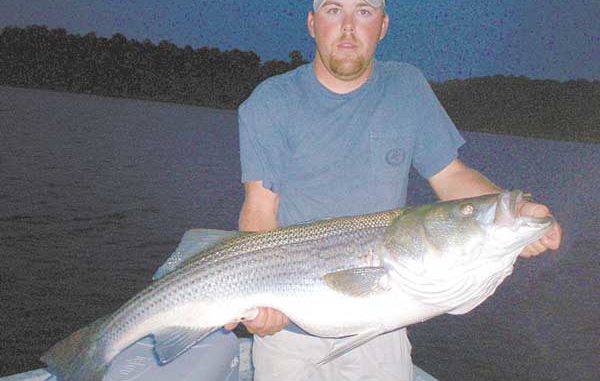
Beat the heat by fishing in Clarks Hill’s tailrace for trophy fish.
When the water at Clarks Hill heats up for the summer, striped bass have two places to hang out where they can survive the heat. Deep water in the lower end offers thermal refuge for the majority of the lake’s striped and hybrid bass. They hold deep near the thermocline where cooler water and higher dissolved-oxygen levels see them through ’til cooler weather arrives.
The other end of the lake, however, is a more dynamic environment. The tailrace below Lake Russell dam offers cold water siphoned from the depths of that lake. Regular water releases keep the 25-foot depths below the 70-degree mark, and water running through the turbines is oxygenated, produces current and brings bait right to the hungry stripers.
Clarks Hill was home to South Carolina’s state-record striped bass from 1993 — when Sam Porter of Six Mile pulled a 55¾-pound fish from the tailrace area — until 2001.
Though sometimes overshadowed by Russell and Hartwell, sister lakes on the Savannah River system, Clarks Hill, aka Lake Thurmond, proves it’s still a major factor when it comes to both size and numbers of striped bass.
Jody Powell guides for striped bass on Clarks Hill out of his home in Tignall, Ga. He said the tailrace is a great place to hook a big fish from July all the way through October.
“Because the water stays cool through the summer, we can pretty well stick with spring tactics to catch fish,” said Powell, who mostly relies on live-bait tactics, using freelines and planerboards. “Once the summer heat gets pretty consistent, the (U.S. Army Corps of Engineers) will run water through the dam on a pretty regular schedule. On a typical day, they’ll start running water somewhere between noon and 2 o’clock. Right after they start running the water is a good time to get on some fish.”
Unlike many other impoundments in South Carolina, fishermen can get a published schedule of water releases from the Corps. Knowing when the water is going to run is a bonus in planning a day’s outing.
“The daylight bite is usually pretty good, and there’s almost always going to be fish holding along the channel somewhere between Bobby Brown State Park and the dam,” said Powell. “We’ll usually start the day out pulling planer boards with live bait. Certain areas along the channel run will hold fish at certain times, and I can often target those bottom contours, but the best bet now is to focus on the edge of the Savannah River channel. The big fish usually come early, say, within the first two hours of daylight. That’s when you want to be pulling big baits. The best baits, if you can get them, will be 10- to 14-inch gizzard shad. “
After the daylight bite, Powell will stick around and fish the moving water once generation begins. He said the current flow will position stripers at strategic ambush points like humps, run-outs and drop-offs. Most will still be related to the edge of the main channel, which directs the flow of released water after it moves out of the immediate spillway run.
“The water generation may last ’til dark,” Purcell said. “Rather than fish through the heat of the day, I’d suggest coming back in the late afternoon. It seems like they’ll bite better the last hour of daylight like they do at first light, plus, you’ll often have current and much cooler water than in the morning.”
If Powell determines he’s going to stay through the day, he’ll change tactics and use downrods below the boat rather than free lines out the back. With the current coming out of the tailrace, he’ll hook live herring on a 2-ounce Carolina rig and make a controlled drift down the main channel.
“There’s not a lot of structure in the channel itself, but that’s where most of the fish seems to concentrate,” said Powell. “I’ll start wherever I’m marking fish and let the current push me along the channel. I’m never very far from the bottom of the channel; I may drop to the bottom and pull up one turn of the reel handle. It seems like those fish stay glued to the bottom, and if you pull up much more than that, you’ll fish right over them without bites.”

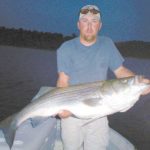
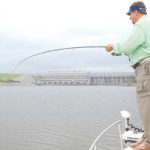

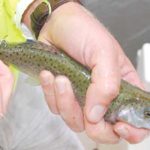
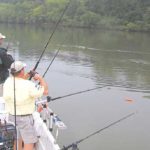
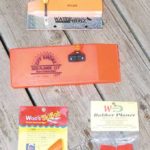
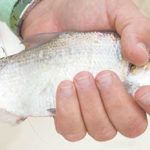



Be the first to comment